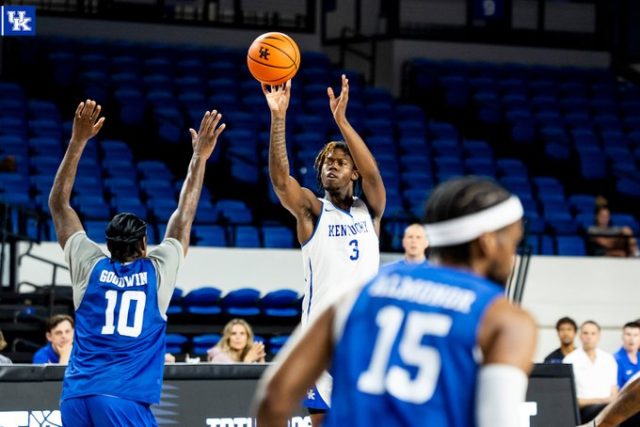Test results show minority students are struggling
Published 8:41 am Wednesday, November 2, 2016
Kentucky fourth- and eighth-graders who are black, Hispanic or eligible for free or reduced price meals are falling behind in science compared with their white and non-eligible peers, according to the National Assessment of Educational Progress.
Overall, a sampling of Kentucky’s fourth- and eighth-graders scored above the national average and held mostly steady compared with their previous performance, but the results showed the need for more work in narrowing achievement gaps between students of color and those in poverty.
Trending
Sam Evans, dean of Western Kentucky University’s College of Education and Behavioral Sciences, said the results make it imperative to “ensure and provide opportunities for all students to achieve at the highest possible level that that student can achieve.
“All of us together have to work to ensure the growth on the part of all students,” he said, adding it could take improvements to teacher preparation along with how schools and communities work with students.
Education Commissioner Stephen Pruitt agreed and called for the state to not overlook the ongoing achievement gaps between various groups of students, a news release from the Kentucky Department of Education said.
“We see it on our state tests and this assessment is no different,” Pruitt said in the release. “We have got to take action to close the achievement gap and eliminate what I believe is its root cause – the opportunity gap – for every student.”
The National Assessment for Educational Progress, also known as the nation’s report card, has been the only nationally representative and ongoing survey of students’ learning progress for more than 30 years, according to the Kentucky Department of Education. Science scoring ranges from 0 to 300.
Performance for Kentucky’s fourth-graders was mostly flat in 2015 compared to the last time the test was given to fourth-graders in 2009. Those students scored 160 last year compared with 161 in 2009.
Trending
A similar pattern played out for Kentucky’s eighth-graders, who rose slightly to 157 in 2015 from 156 in 2011. Both student groups tested above the national average of 153.
Pruitt explained the flat performance as a result of unfinished implementation of Kentucky’s newer science standards.
“I believe the next time we see NAEP science scores reported, we will see significant improvement, since Kentucky teachers will have had more time to align their teaching methods and materials with the standards,” Pruitt said in the release, adding “Students will have had time to build a stronger foundation of learning based on the standards and what they demand.”
A statement from the Prichard Committee for Academic Excellence echoed Pruitt’s comments. The committee called the Kentucky Academic Standards for Science more rigorous than previous incarnations and noted the Kentucky Department of Education is creating assessments aligned with those newer standards “that will measure student mastery of important scientific knowledge and skills while also providing information to adjust instruction.”
Those newer state standards are seen as more rigorous because they include the Next Generation Science Standards, which emphasize scientific practices, key ideas and the connections between different fields.
Cory Curl, associate executive director for the Prichard Committee, described beyond exclusively teaching students scientific terminology and facts “to really help them apply what they learn.”
Curl sees the NAEP science test, with its multiple choice and short answer format, as only one piece in understanding how students are performing.
The state can help fill in the picture.
“It’s so important that states like Kentucky lead the way in developing robust assessments that measure the full range of what kids need to be able to know and do in science,” she said.
In the meantime, the achievement gap remains a problem too.
NAEP results showed the average score for white fourth-graders at 164 compared to their African-American and Hispanic counterparts at 138 and 149, respectively. White eight-graders scored an average of 160, while their black peers scored 134 and Hispanic peers 155.
Fourth-graders eligible for free or reduced price meals scored an average of 152, while their non-eligible classmates scored 20 points higher. A similar group for eighth-graders scored at 149 on average, which was 21 points lower than their non-eligible peers.
The gap between male and female students was smaller, with a two-point gap for fourth-graders and a four-point gap for eight-graders.
Jennifer Davis, director of elementary and secondary programs for the Bowling Green Independent School District, was only available to comment through email. She called for schools to continue finding ways to increase student achievement by providing hands-on learning experiences for all students along with research-based supports for struggling students.
For Curl, the problem will continue to challenge educators.
“The gaps between student groups are not getting any traction in closing so that is going to be one major area of focus for all of us in education,” she said.
— Follow education reporter Aaron Mudd on Twitter @BGDN_edbeat or visit bgdailynews.com.







